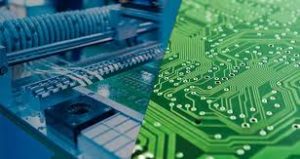The design of modern printed circuit boards (PCBs) would be impossible without vias. The holes in a PCB contain all those tiny parts and are so much more than just that. They are paths that establish a connection between different levels of a PCB to provide both electrical and thermal connectivity in the circuit. Anyone dealing with electronic design and manufacturing should know how they work and are used.
Types of PCB Vias
Vias come in many versions, each geared toward fulfilling specific requirements with classic circuit board design. Through Hole Vias; Blind Vias; Buried Vias.
Into the Full BoardThickness and a through-hole via connects the top and bottom layers over the whole board. They are easily manufacturable and are usually used in normal PCB designs.
They are the high-volume blind via, which begin on an exterior layer and end on an inner layer. These allow you to save board space, and still it helps to provide a way to connect between the surface and the internal layers.
Only internal-layer buried vias are invisible from external surfaces. This is used in a very complex circuit board to link internal layers without disrupting the internal layout.
Different vias have different functions and are selected according to the complexity and functional requirements of the PCB.
Functionality and Benefits
Vias are conductive passages between different layers on a PCB that allow signals to pass from one layer to another. Vias are used in multi-layer PCBs with high component densities to save space and signal quality.
In addition to enabling signal connectivity, vias also help with heat dissipation. Power electronic components often generate a lot of heat and, if this heat is not effectively dissipated, this can cause the components to fail. Vias aid in moving heat from hot components to the cooler areas of the board (the ground layer or heat sinks).

Technical Specifications
Vias dimensions are very critical and are usually milled or drilled in MILS increments (thousandth of an inch). As an example, the drill size necessary for a via might be as small as 10 mils for high-density boards, or as great as 35 mils for standard PCBs. The size choice is the primary factor for the impedance and performance of the PCB.
In addition, the thickness of the metal layers plated inside the vias can also be different, usually copper. Via plating is usually standard at about 1 mil (0.001 inches) but thicker plating can be applied to improve conductivity and heat transfer properties.
Impact on PCB Performance
One of the most important things to consider while designing a PCB is vias which are through-hole platings between conductive layers. Properly placing the vias and their quality can dramatically affect the operation of a PCB over its lifetime. Badly made via networks may cause signal integrity problem and EMI issues as well. Conversely, smart via placement can make signal integrity and the board as a whole much stronger.
All in all, when looking at PCB vias, they are more than just a drill hole into a circuit board and they are fundamental parts of ensuring electrical continuity and thermal concerns in a PCB. Vias are essential for electronic product performance; however, they can be easy to misunderstand and difficult to get right.
F you are looking for more in-depth about pcb vias and all the tricks to use place and route vias, you should look in depth further in several technical resources and industry standards.